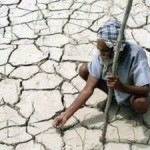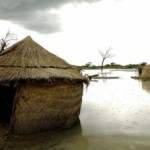Most historical monuments that have been dated do not have any lichen growth over them. In such cases, only an indirect method can be used to find the value of colonization delay. After enquiring with local people and authorities, a bridge close to the Kedarnath temple was found to be around 85 years old. The bridge and its surrounding walls do not have any lichen growth over them. If we take the age of the bridge as 85 years (approximate), then we can presume the colonization delay to be 85 years (minimum). Considering these values of colonization delay and growth rate, the dates of lichens on various glacial boulders of different loops have been calculated.
Largest lichens on the boulders of moraines of loops in the four stages of advance and retreat of the glacier are 173, 155, 94 and 52 mm on moraines of stages I–IV respectively. Using the above values of colonization delay and growth rate, the ages of these lichens are shown in Table 1.

These dates further suggest that climatic changes in this part of the world started nearly 258 years ago, since the retreat of the glacier is associated with global warming. It contradicts the statement by Raina[9] that ‘Glaciers have been retreating in the Himalaya since Last Glacial Maxima (LGM) at 18 to 20,000 years ago’.
History mentions that the Kedarnath temple of Lord Shiva was constructed by five brothers known as the Pandavas[10]. The temple is strong, made up of thick granites and high-grade metamorphic gneissic rock slabs, pillars and bricks. The walls and pillars are about 1 m thick.
Siddharth[11], in his studies on the basis of astronomical and literary references supported by archaeological evidences, concluded, “Events described in the great epic of Mahabharata could have occurred around 1350 BC in the region of latitude of 35 degrees stretching right across Turkey and western Iran through southern Turkmenistan, Afghanistan, and Kashmir to Indus valley.”
Marine excavations by Rao[12] confirmed the existence of the city of Dwarka dating back to around 1700 BC. Interestingly, these excavations revealed links with some of the above-mentioned places. Recently, Rao has mentioned about the possibility of a tsunami drowning the ancient city of Dwarka in 1500 BC after striking the coast of Gujarat. Kochhar[13] dated the war of Mahabharatha back to around 1000 BC. Vartak[14] has derived on the basis of scientific dating, the initiation of the Mahabharat War to be 16 October 5561 BC. The Hindu Timeline[15] dates the War back to 1424 BC.
The exact date of the Kedarnath temple is not mentioned in the literature. If we look at above references, a minimum age of about 3000 years can be considered for the temple. The location of temple within the receded area of the glacier suggests three possibilities:
(a) There was no glacier in the region at the time of construction of the temple – minimum of 3000 years ago.
(b) There was a glacier but beyond the present location of the temple.
(c) There was a glacier and the temple was constructed after cutting through the ice of the glacier at that particular position.
Two wall engravings of writings/poems dated AD 650 and 850, on the back boundary wall of the temple, discuss the beauty of the Kedarnath temple (Figure 6). There is no mention about snow/ice/glaciers in them. These findings suggest that there was no glacier during that period around the temple.














